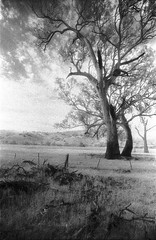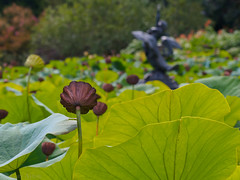Most people with little photographic knowledge who currently use point and shoot digital cameras and who want to upgrade to a better camera do so for one or more of the following reasons:
- better image quality – more like the pros
- ability to blur the background
- ability to shoot action shots of fast moving subjects
Unfortunately, there is no one camera that suits every purpose best, and worse, the more versatile and capable the camera, the more complex it is to use and thus the LESS SUITABLE it is for a beginner who does not understand complicated basic concepts of exposure, ISO, aperture, shutter speed, focal length, let alone the myriad of settings which can be set on the more advanced cameras.
Many think that just by purchasing a dSLR they will get better photos, but the truth is more that they need to spend much time and thought understanding and practicing and experimenting with the basics.
Furthermore, they are likely to be sold a dSLR with one or two “kit” lenses which in reality will give them photos that “look” much like their photos from their point and shoot cameras. This is because they are expecting to automatically get ability to blur the background like the pros do, but the kit lenses at f/3.5-5.6 are just not going to give them that capability unless they are shooting with a telephoto at a subject at close range.
If you want to blur the background you need a lens with f number of f/2.8 or a smaller number (eg. f/1.8, f/1.7 or f/1.4) and no portrait zoom kit lens is like this. Those lovely wedding photos pros take, are often shot with lenses such as a 70-200mm f/2.8 IS which will set you back over $2000 for just the lens, but you could achieve similar results with a cheaper pro lens such as a 135mm f/2.0 lens but this still costs over $1000 for just the lens. I don’t like carrying big expensive lenses like these around, so I achieve the same image quality with a cheap manual focus lens, the Rokinon 85mm f/1.4 ($265).
They also may not realise that unlike the days of film when cameras were an investment and lasted 30 years or so, their new dSLR is likely to be needing replacement in only 5 years – ouch!
Despite this, if the prime aim is to shoot fast moving subjects, then at this moment in time, the dSLR is the way to go, and preferably one designed for such shots and unfortunately, this means at least a mid-range camera which will set you back around $1500-2000, and higher if one wants a weatherproofed model which won’t die if it gets some rain on it.
Most beginners, would be best settling on a camera that will be small and light enough they will actually take it with them and learn to love experimenting with it without it being intrusive and embarassing for them to use at social events.
The best type of camera for most of these beginners is a “mirrorless” camera – quieter, smaller, lighter and generally easier to use than a dSLR, but still able to give the same image quality (or close enough that it does not matter) and still get the ability to blur the background.
If you need some convincing that such a camera will be adequate, check out some of my photos taken with a Panasonic GH-1 from around the world and you can see it is a very capable and versatile camera indeed.
While Nikon has just introduced their version of this style of camera, it has a smaller sensor and it will be not as suitable for blurring the background as the other brands which I will thus concentrate on.
Essentially, there are 3 brands I would look at for the beginner looking to upgrade from a point and shoot, and 2 of these (Panasonic and Olympus) share the same lens mount technology (“Micro Four Thirds”) which means there are LOTS of lenses and camera models available to choose from. The 3rd brand is Sony (sorry Canon has not yet developed a camera in this style).
ALL of these cameras have a good enough image quality and number of pixels to satisfy the vast majority of users so let’s forget about this aspect as nitpicking can get confusing and there are pros and cons which in the end do not matter that much to most people.
The MOST important consideration is what lenses to buy and can you afford them and how big are they.
The new Sony NEX 5n and NEX 7 are very nice cameras but unfortunately, unlikely to be available before Christmas 2011 due to flooding destroying their factory in Thailand. Furthermore Sony lenses are larger, heavier and there are only a few to choose from at this stage.
That leaves us with Panasonic and Olympus Micro Four Thirds.
Olympus at present is having major corporate issues but this would not stop me buying Olympus Micro Four Thirds products as the presence of Panasonic reduces your risk substantially.
My favourite cost effective Micro Four Thirds camera at present is the Panasonic G3 (I own the older GH-1, and would love the even better GH-2 but this is quite expensive), but if you plan to do a lot of photography on the cheap using old 2nd hand manual focus lenses, then I would strongly consider one of the new Olympus models (eg. E-P3 or E-PL3).
The Panasonic G3 with 14-42mm kit lens sells for $599 in the US but it is a ridiculous $849 in Australia – thanks for ripping us off Panasonic Australia!
See my comparisons of these here and you can see that within these cameras you have quite a range of choices including:
Cameras with built-in viewfinder and flip-out rotatable LCD screen for self-portraits:
- Panasonic GH-2 – the high end video capable camera – $US759 body only, $US795 with 3x zoom lens or $US1449 with 10x zoom lens
- Panasonic GH-1 – the older but still very good high end video capable camera which has similar image quality to Canon 7D dSLR, but no touch screen and AF not as fast as the others here. $US599 body only.
- Panasonic G3 – cut-down version of the GH-2 and thus good value for money at $US599 incl 3x zoom lens
More compact cameras with optional add-on viewfinder:
- Panasonic GX-1 – for the advanced photographer – $US699 body only or $US949 with 3x power zoom lens
- Olympus E-P3 – for the advanced photographer but also has built-in image stabiliser and better flash control – $US779 with 3x zoom lens
- Olympus E-PL3 – flip out LCD screen with built-in image stabiliser and better flash control – $US599 with 3x zoom lens
Very compact “simplified”, less capable and cheaper cameras:
- Olympus E-PM1 – built-in image stabiliser, $US449 with 3x zoom
- Panasonic GF-3 – $US419 body only
Your next decision is which lens to get.
Most people will probably get the twin lens kit because the deals are usually quite good value for money and they make great daylight travel photography lenses.
BUT as I alluded to above, the kit lenses are not always going to give you what you want, and particularly in low light or indoors, they will not be very helpful, so IN ADDITION to these kit lens, you should strongly consider getting a low light lens for indoors or evenings.
Now for most young ladies who love to do hand held self-portraits or would like to do those party shots indoors withot having to use a flash, then a Panasonic G3 with its flip-out rotatable LCD screen combined with a Panasonic 20mm f/1.7 lens will get you those shots and capture them with beautifully sharp imagery whilst still having some background blurring, and you can do it with face recognition auto-focus – something that is not readily available on a dSLR!
This 20mm f/1.7 lens is ridiculously expensive in Australia even at the reduced price of $599 – try to get a 2nd hand one in Australia for under $350, or get one from overseas – they sell for well under $400 brand new elsewhere. This lens though is tiny and will be a pleasure to carry in your hand bag, but it does not have any zoom – you can’t have everything!
This 20mm f/1.7 lens is great for candid photography, parties and other social events, and fantastic for walking the streets at night – and in all cases, the f/1.7 aperture means you just need to bump the ISO to 400 or 800 and you can do all this without having to resort to using your flash – now you can’t do that with a point and shoot and get the same image quality!
The Lumix 20mm f/1.7 hand held at night last night:
Now if you have the money, you could get the even better but bigger Panasonic 25mm f/1.4 lens instead of the 20mm f/1.7 lens.
Other lenses to strongly consider:
- Olympus 45mm f/1.8 – great for portraits but not hand held self-portraits
- Rokinon 85mm f/1.4 manual focus lens in Nikon or Canon mount plus an adapter – this gives superb background blurring and is a lot of fun and sells brand new under $300 from Amazon.com.
- see here for more information
Do yourself a BIG favor and take the time to try to understand the basic concepts of photography such as ISO, shutter speed, aperture, lens focal lengths so then you can take your camera for a real ride and get the photos that you want rather than the photos the default auto setting on the camera will give you.
All the modern cameras are capable of taking great photos, the limiting factor is most likely to be you,the subject and most importantly the lighting on the subject – but if you haven’t got your camera with you, you will not get any photo at all – hence, aim for the smallest, lightest camera that will do what YOU need – not what the guy in the camera shop needs.
I also have a comparison of Canon 550D vs Canon 7D dSLRs vs Panasonic GH-1 camera here which some may be interested in the general principles of the pros and cons – it all comes down to the lenses!











